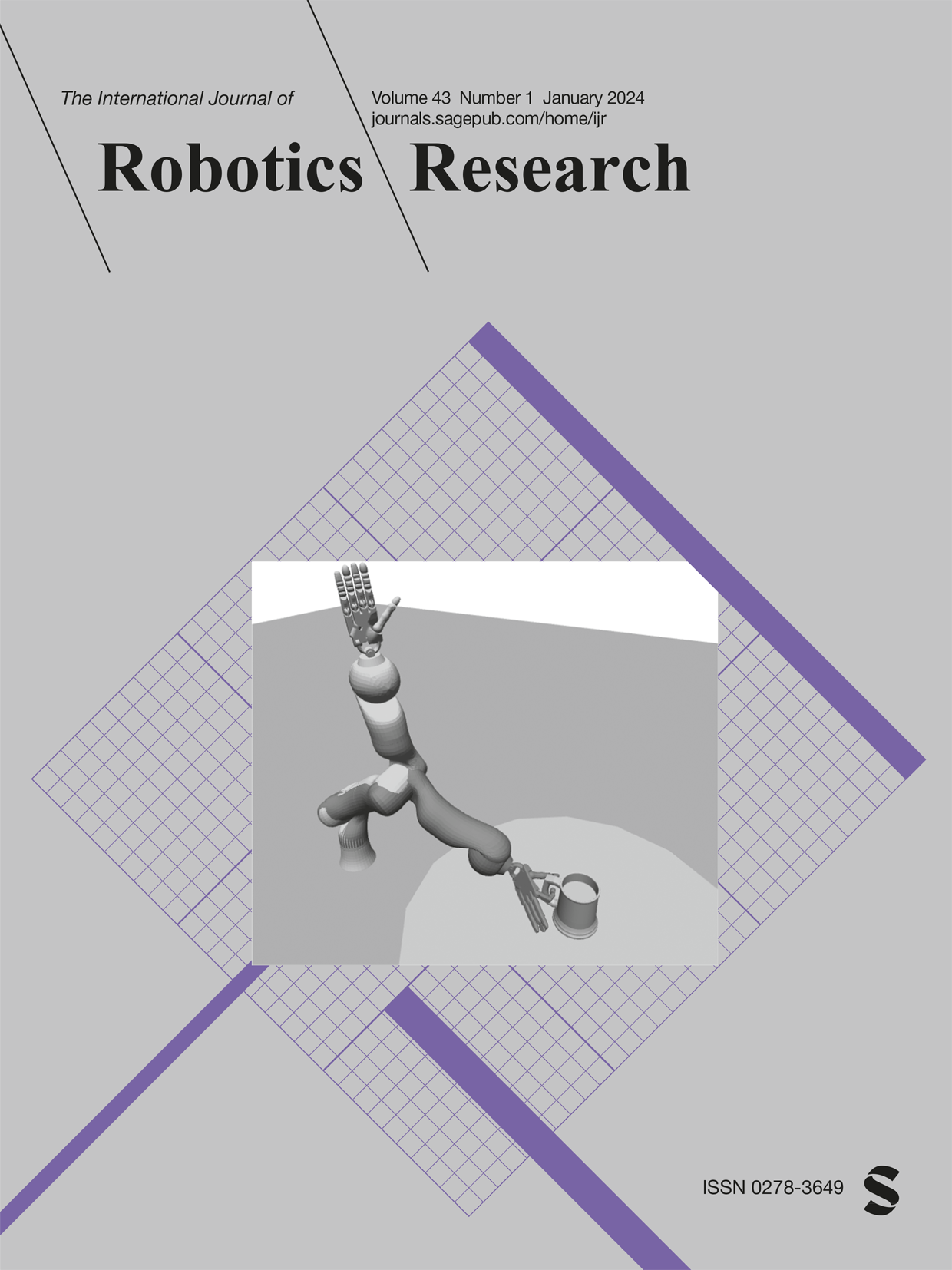局部连接的相互关联网络:向前传播原语
IF 5
1区 计算机科学
Q1 ROBOTICS
引用次数: 1
摘要
在状态转移、观察和奖励函数最初未知的情况下,用于规划的端到端学习是一种很有前途的方法,可以找到好的机器人策略。许多采用这种方法的神经网络架构已经显示出积极的结果。在这些网络中,看似很小的组件在不同的体系结构中被反复使用,这意味着提高这些组件的效率对提高网络的整体性能具有很大的潜力。本文旨在改进其中一个组件:前向传播模块。特别地,我们提出了局部连接相关网络(LCI-Net)——一种具有非共享但相关权重的新型局部连接层——以提高学习随机转移模型的效率,从而通过学习到的转移模型来规划和传播信息。LCI-Net是一个小型的可微神经网络模块,可以插入到各种现有的体系结构中。为了评估目的,我们将LCI-Net应用于VIN和QMDP-Net。VIN是一个端到端神经网络,用于解决过渡和奖励函数最初未知的马尔可夫决策过程(mdp),而QMDP-Net是部分可观察马尔可夫决策过程(POMDP)的对应物,其过渡、观察和奖励函数最初未知。在2D和3D导航和抓取的基准问题上进行的仿真测试显示出令人满意的结果:仅用LCI-Net单独改变前向传播模块,VIN和QMDP-Net的泛化能力分别提高了3倍和10倍以上。本文章由计算机程序翻译,如有差异,请以英文原文为准。
Locally connected interrelated network: A forward propagation primitive
End-to-end learning for planning is a promising approach for finding good robot strategies in situations where the state transition, observation, and reward functions are initially unknown. Many neural network architectures for this approach have shown positive results. Across these networks, seemingly small components have been used repeatedly in different architectures, which means improving the efficiency of these components has great potential to improve the overall performance of the network. This paper aims to improve one such component: The forward propagation module. In particular, we propose Locally Connected Interrelated Network (LCI-Net) – a novel type of locally connected layer with unshared but interrelated weights – to improve the efficiency of learning stochastic transition models for planning and propagating information via the learned transition models. LCI-Net is a small differentiable neural network module that can be plugged into various existing architectures. For evaluation purposes, we apply LCI-Net to VIN and QMDP-Net. VIN is an end-to-end neural network for solving Markov Decision Processes (MDPs) whose transition and reward functions are initially unknown, while QMDP-Net is its counterpart for the Partially Observable Markov Decision Process (POMDP) whose transition, observation, and reward functions are initially unknown. Simulation tests on benchmark problems involving 2D and 3D navigation and grasping indicate promising results: Changing only the forward propagation module alone with LCI-Net improves VIN’s and QMDP-Net generalisation capability by more than 3× and 10×, respectively.
求助全文
通过发布文献求助,成功后即可免费获取论文全文。
去求助
来源期刊
CiteScore
22.20
自引率
0.00%
发文量
34
审稿时长
6-12 weeks
期刊介绍:
The International Journal of Robotics Research (IJRR) has been a leading peer-reviewed publication in the field for over two decades. It holds the distinction of being the first scholarly journal dedicated to robotics research.
IJRR presents cutting-edge and thought-provoking original research papers, articles, and reviews that delve into groundbreaking trends, technical advancements, and theoretical developments in robotics. Renowned scholars and practitioners contribute to its content, offering their expertise and insights. This journal covers a wide range of topics, going beyond narrow technical advancements to encompass various aspects of robotics.
The primary aim of IJRR is to publish work that has lasting value for the scientific and technological advancement of the field. Only original, robust, and practical research that can serve as a foundation for further progress is considered for publication. The focus is on producing content that will remain valuable and relevant over time.
In summary, IJRR stands as a prestigious publication that drives innovation and knowledge in robotics research.

 求助内容:
求助内容: 应助结果提醒方式:
应助结果提醒方式:


